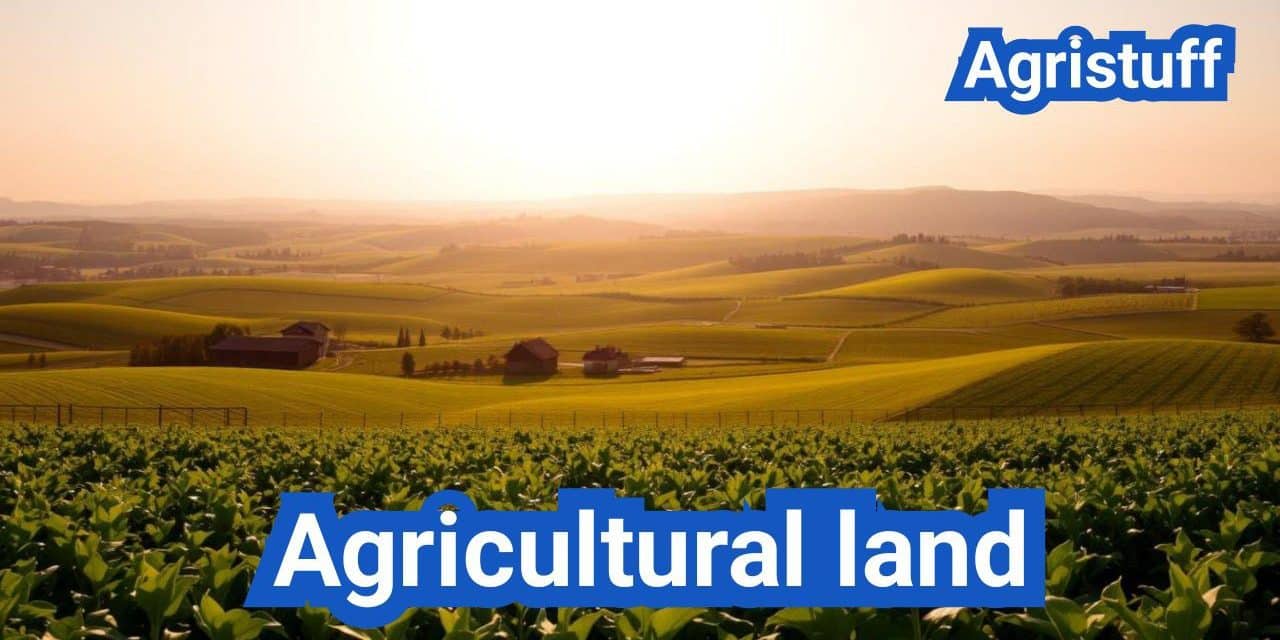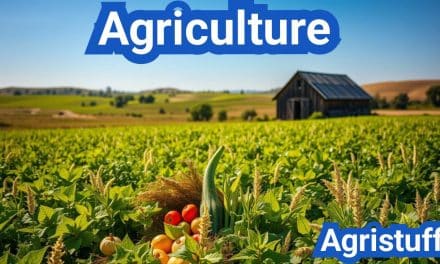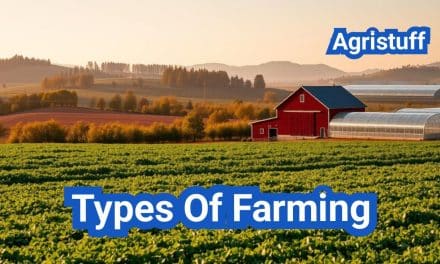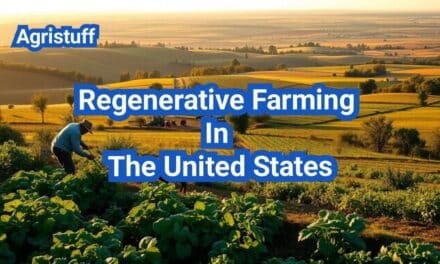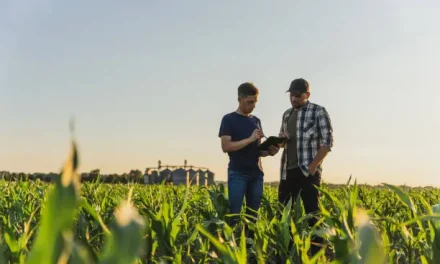Agricultural land is a vital component of the global food system, referring to the land devoted to agriculture, including the rearing of livestock and production of crops.
The classification of this type of land helps determine its suitability for various agricultural purposes. Examples include cropland, pastureland, and forestland, each serving a unique role in food production.
Understanding the meaning and classification of farming land is crucial for sustainable agriculture practices and informed decision-making about land use and management.
Key Takeaways
- Agricultural land is essential for the global food system.
- Classification of agricultural land determines its suitability for various purposes.
- Examples of agricultural land include cropland, pastureland, and forestland.
- Understanding agricultural land is crucial for sustainable practices.
- Informed decision-making about land use is vital for agriculture.
What Is Agricultural Land: Definition and Importance
At the heart of food production lies agricultural land, a critical resource that sustains human life. Agricultural land is defined as land that is actively engaged in the commercial production or growing of crops, plants, and/or animals under a sound management program.
Core Characteristics and Terminology
Agricultural land encompasses various types of land use, including cropland, pastureland, and rangeland. Understanding the core characteristics of agricultural land, such as soil quality, water availability, and topography, is crucial for effective land management. Familiarity with agricultural terminology is also essential for farmers, policymakers, and stakeholders to communicate effectively and make informed decisions.
Agricultural Land as a Critical Natural Resource
Agricultural land is not just a factor of production; it’s a vital component of the ecosystem, providing essential services like soil conservation, water filtration, and biodiversity support. As noted by the United States Department of Agriculture (USDA), “Agricultural land is a critical natural resource that requires careful management to ensure its productivity and sustainability for future generations.”
The importance of agricultural land extends beyond food production to include economic and environmental benefits. Effective management of agricultural land is critical to balancing these aspects and ensuring long-term sustainability.
The 5 Types of Agricultural Land Use

Understanding the different types of agricultural land use is crucial for effective land management and sustainability. Agricultural land is a vital resource that supports various activities, including food production, livestock grazing, and conservation efforts.
Cropland for Food Production
Cropland is used for growing crops such as grains, fruits, and vegetables. It is a critical component of global food security, providing the majority of the world’s food supply. Effective management of cropland involves crop rotation, soil conservation, and irrigation management.
Pastureland for Livestock
Pastureland is dedicated to grazing livestock, such as cattle, sheep, and goats. It provides the necessary forage for these animals, supporting the livestock industry. Proper pasture management includes maintaining soil health, controlling weeds, and ensuring adequate forage.
Rangeland for Grazing
Rangeland is characterized by native vegetation and is often used for extensive grazing. It is typically found in areas with challenging environmental conditions, such as arid or semi-arid regions. Rangeland management focuses on maintaining ecosystem balance and preventing overgrazing.
Forestland for Timber and Conservation
Forestland is used for timber production, conservation, and other forest products. It plays a significant role in carbon sequestration, biodiversity conservation, and soil protection. Sustainable forest management practices are essential to balance economic and environmental benefits.
In conclusion, the five types of agricultural land use – cropland, pastureland, rangeland, forestland, and other agricultural land uses – are integral to meeting food demands, supporting rural livelihoods, and maintaining environmental sustainability. Understanding these categories is essential for optimizing land use and management practices.
Agricultural Land Classification Systems
Understanding agricultural land classification is essential for effective land management and use. Agricultural land classification systems provide a framework for evaluating the suitability of land for various agricultural purposes, enabling farmers and policymakers to make informed decisions.
Agricultural land can be classified using various systems, each serving a specific purpose. One of the most widely used systems is the USDA Land Capability Classification, which categorizes land based on its suitability for agricultural use, taking into account factors such as soil quality, slope, and erosion risk.
USDA Land Capability Classification
The USDA Land Capability Classification system is a comprehensive method for assessing land capability. It classifies land into eight capability classes, ranging from Class I (land with few limitations for agriculture) to Class VIII (land not suitable for agriculture). This system helps landowners and managers understand the potential and limitations of their land.
Soil Productivity Ratings
Soil productivity ratings are another critical aspect of agricultural land classification. These ratings assess the soil’s ability to support crop growth and productivity. Factors such as soil texture, organic matter content, and nutrient availability are considered when determining soil productivity ratings.
Climate and Geographic Classifications
Climate and geographic classifications are also vital for understanding agricultural land potential. These classifications consider factors such as temperature, precipitation patterns, and landforms, which significantly impact agricultural productivity and land use decisions.
Land Use Intensity Classifications
Land use intensity classifications help determine the appropriate level of agricultural activity for a given area. This classification system considers factors such as crop rotation, irrigation, and mechanization, enabling land managers to optimize land use while minimizing environmental impacts.
By utilizing these agricultural land classification systems, landowners and managers can make informed decisions about land use, management practices, and conservation strategies, ultimately contributing to more sustainable and productive agricultural practices.
“The way we manage our land will determine the course of our future.”
Unknown
How to Assess Agricultural Land Quality

Assessing the quality of agricultural land is a crucial step in determining its potential for various farming activities. This process involves evaluating several key factors that impact the land’s productivity and sustainability.
Conducting Comprehensive Soil Tests
Soil testing is a fundamental aspect of assessing agricultural land quality. It involves analyzing the soil’s physical and chemical properties, such as pH levels, nutrient content, and structure. Comprehensive soil tests help identify potential soil constraints and opportunities for improvement.
Evaluating Water Resources and Rights
Adequate water supply is essential for agricultural productivity. Evaluating water resources involves assessing the availability and quality of water, as well as any legal rights or restrictions associated with its use. Water resource evaluation helps farmers and landowners understand their water security and plan accordingly.
Analyzing Topography and Accessibility
The topography of agricultural land can significantly impact its usability and productivity. Analyzing the land’s slope, elevation, and accessibility helps determine its suitability for different farming practices and equipment.
Climate Considerations
Climate plays a critical role in agricultural productivity. Understanding the local climate conditions, including temperature, precipitation patterns, and extreme weather events, is essential for selecting suitable crops and developing effective farming strategies.
Intensive vs. Extensive Farming on Agricultural Land
Intensive farming and extensive farming are two distinct strategies used in agricultural land management. The choice between these approaches depends on various factors, including land availability, resources, and the desired level of productivity.
Characteristics of Intensive Farming
Intensive farming involves using high levels of inputs such as labor, capital, and technology to achieve high yields on a relatively small area of land. This approach is characterized by:
- High crop density and yield
- Advanced irrigation systems
- Use of fertilizers and pesticides
- Mechanized farming techniques
Intensive farming is often used in areas with limited land availability, where maximizing output per acre is crucial.
Characteristics of Extensive Farming
Extensive farming, on the other hand, involves using larger areas of land with lower levels of inputs. This approach is characterized by:
- Lower crop density and yield per acre
- Less reliance on irrigation systems
- Minimal use of fertilizers and pesticides
- More labor-intensive practices
Extensive farming is often practiced in regions with abundant land and lower population densities.
Choosing the Right Approach for Your Land
When deciding between intensive and extensive farming, consider factors such as land quality, climate, and available resources. The following table summarizes key differences between the two approaches:
| Characteristics | Intensive Farming | Extensive Farming |
|---|---|---|
| Land Use | High yield on small land | Lower yield on larger land |
| Input Levels | High labor, capital, and technology | Lower labor, capital, and technology |
| Irrigation | Advanced irrigation systems | Less reliance on irrigation |
By understanding the characteristics of intensive and extensive farming, farmers can make informed decisions about the most suitable approach for their agricultural land, optimizing productivity and resource use.
Managing Rural Farmland Effectively
Managing rural farmland effectively requires a comprehensive approach that includes planning, infrastructure development, and addressing challenges. This multifaceted strategy is crucial for maximizing productivity and ensuring sustainable agriculture practices.
Developing Effective Farm Plans
Creating a detailed farm plan is the first step towards effective rural farmland management. This involves assessing the land’s potential, setting clear objectives, and outlining strategies for achieving them. A well-crafted farm plan helps in optimizing resource allocation and improving overall farm productivity.
For instance, a farm plan might include crop rotation schedules, soil conservation measures, and irrigation plans. By having a clear plan, farmers can better manage their resources and respond to challenges such as pests, diseases, or adverse weather conditions.
Addressing Rural Farming Challenges
Rural farming faces numerous challenges, including soil erosion, water scarcity, and equipment maintenance. Addressing these challenges proactively is essential for maintaining the health and productivity of the farmland.
For example, implementing conservation tillage or cover cropping can help mitigate soil erosion. Similarly, adopting efficient irrigation systems can help manage water resources more effectively. Regular maintenance of farm equipment is also crucial to prevent breakdowns and reduce downtime.
“The way we manage our land is a reflection of our commitment to sustainability and the future of agriculture.” – Unknown
Infrastructure Considerations
Infrastructure plays a vital role in the effective management of rural farmland. This includes not only physical structures like barns and fencing but also irrigation systems and access roads.
Investing in appropriate infrastructure can significantly enhance farm productivity and efficiency. For instance, a well-designed irrigation system can ensure that crops receive the right amount of water at the right time, while good access roads can facilitate the transportation of produce and equipment.
| Infrastructure Component | Importance | Examples |
|---|---|---|
| Irrigation Systems | High | Drip irrigation, Sprinkler systems |
| Access Roads | Medium | Farm roads, Rural highways |
| Storage Facilities | High | Barns, Silos |
Urban Agricultural Land Opportunities

The concept of urban agricultural land is revolutionizing the way we think about food production in metropolitan areas. Urban agriculture involves growing crops and raising livestock in urban areas, often using innovative techniques such as vertical farming and hydroponics.
Setting Up Urban Farming Operations
To set up urban farming operations, one must first identify a suitable location. This could be a rooftop, a vacant lot, or even a community garden. Innovative techniques like hydroponics and aeroponics can be used to maximize space and efficiency. It’s also crucial to assess the availability of water and sunlight.
Navigating Urban Agriculture Regulations
Urban agriculture is subject to various regulations that vary by city and state. Understanding these regulations is key to establishing a successful urban farm. This includes zoning laws, health department regulations, and any necessary permits or licenses.
Community Gardens and Cooperative Farming
Community gardens and cooperative farming models offer opportunities for individuals to come together and share resources, knowledge, and risk. These initiatives not only provide fresh produce but also foster community engagement and education on sustainable farming practices.
By embracing urban agricultural land opportunities, cities can move towards a more sustainable and food-secure future. Whether through individual efforts or community initiatives, the potential for urban agriculture to transform urban landscapes is vast.
Managing Irrigated Agricultural Land

As a significant portion of the world’s agricultural land relies on irrigation, managing these systems efficiently is essential for sustainable farming practices. Irrigated agricultural land involves using various irrigation methods to supply water to crops, with the goal of optimizing water use and reducing waste.
Selecting Appropriate Irrigation Methods
The choice of irrigation method depends on several factors, including crop type, soil characteristics, and climate conditions. Drip irrigation and sprinkler irrigation are two commonly used methods that offer high water efficiency. Drip irrigation delivers water directly to the roots of the plants, minimizing evaporation and runoff.
Water Conservation Strategies for Irrigated Farms
Implementing water conservation strategies is crucial for the sustainability of irrigated agricultural land. Techniques such as mulching and cover cropping help retain soil moisture and reduce the need for frequent irrigation. Additionally, using soil moisture sensors can aid in determining the optimal timing for irrigation.
Drainage and Water Management
Effective drainage and water management are vital components of managing irrigated agricultural land. Proper drainage systems prevent waterlogging, which can lead to soil salinization and reduced crop yields. Farmers can adopt precision irrigation techniques to manage water resources more efficiently and minimize environmental impacts.
How to Maintain Tillage Land

To ensure the longevity and productivity of tillage land, farmers must implement effective maintenance strategies. Maintaining tillage land involves a combination of practices that enhance soil health, reduce erosion, and promote sustainable agricultural productivity.
Seasonal Mowing and Vegetation Management
Regular mowing and vegetation management are critical for maintaining tillage land. This involves controlling weeds, managing cover crops, and ensuring that the land is prepared for the next planting season. Effective vegetation management helps in reducing soil erosion and maintaining soil health.
Implementing Crop Rotation Practices
Crop rotation is a vital practice for maintaining the fertility and productivity of tillage land. By rotating crops, farmers can improve soil structure, increase nutrient availability, and reduce the risk of pests and diseases. This practice also helps in maintaining soil organic matter and enhancing biodiversity.
Controlling Erosion and Runoff
Erosion control is essential for maintaining tillage land. Techniques such as contour plowing, terracing, and buffer strips can help reduce soil erosion and runoff. These practices not only protect the soil but also help in maintaining water quality and reducing the risk of flooding.
Soil Fertility Management
Managing soil fertility is crucial for the productivity of tillage land. This involves testing soil regularly, applying appropriate fertilizers, and incorporating organic matter. By maintaining optimal soil fertility, farmers can improve crop yields and ensure the long-term sustainability of their land.
By implementing these maintenance practices, farmers can ensure the long-term productivity and health of their tillage land, contributing to sustainable agriculture and environmental conservation.
Agricultural Land Assessments and Taxation

Landowners must navigate the complexities of agricultural land assessments and taxation to minimize their tax liabilities. Agricultural land assessments determine the value of the land for tax purposes, while taxation refers to the actual taxes levied on the land.
Understanding Agricultural Tax Exemptions
Agricultural tax exemptions can significantly reduce the tax burden on landowners. To qualify, land must be used for agricultural purposes, and owners may need to apply for exemption status. It’s essential to understand the specific requirements and application process to take advantage of these exemptions.
Preparing for Land Assessment Visits
When assessors visit the land, they evaluate its value based on various factors, including soil quality, land use, and improvements. Landowners should be prepared to provide information and documentation to support their land’s value. Maintaining accurate records can help ensure a smooth assessment process.
| Factor | Description | Impact on Assessment |
|---|---|---|
| Soil Quality | Assessors evaluate the soil’s fertility and productivity. | High-quality soil can increase land value. |
| Land Use | The current use of the land, such as cropland or pastureland. | Different land uses affect the land’s value and tax rate. |
| Improvements | Structures or enhancements made to the land, like irrigation systems. | Improvements can increase the land’s value and taxes. |
Appealing Assessment Decisions
If landowners disagree with the assessment, they can appeal the decision. This process typically involves submitting evidence to support their claim, such as data on comparable land values or errors in the assessment. Understanding the appeals process is crucial for achieving a successful outcome.
Navigating the Agricultural Land Market

Navigating the agricultural land market involves a deep understanding of current market values and trends. To make informed decisions, buyers and sellers must research the market thoroughly.
Researching Current Market Values
Understanding the current market value of agricultural land is essential for both buyers and sellers. This involves analyzing recent sales data, soil quality, and the potential for crop production or livestock grazing. Market reports and agricultural surveys can provide valuable insights into the current state of the market.
Working with Agricultural Real Estate Specialists
Agricultural real estate specialists have the expertise to guide buyers and sellers through the complex process of agricultural land transactions. They can provide information on market trends, land valuation, and potential for development. Working with a specialist can help ensure that transactions are fair and profitable.
Financing Options for Farm Purchases
Exploring financing options is a critical step in purchasing agricultural land. Buyers can consider traditional bank loans, government-backed loans, and private financing options. Each has its advantages and disadvantages, and the choice will depend on the buyer’s financial situation and goals.
By understanding market values, working with specialists, and exploring financing options, buyers and sellers can navigate the agricultural land market with confidence.
Farm Investment Strategies for Agricultural Land

Investing in agricultural land requires a comprehensive understanding of farm investment strategies to maximize returns. Agricultural land investment can be a lucrative venture, but it involves various risks and challenges. To succeed, investors must adopt effective strategies that balance risk and reward.
Evaluating ROI for Agricultural Properties
One crucial aspect of farm investment strategies is evaluating the return on investment (ROI) for agricultural properties. This involves assessing the potential income generated by the land, whether through crop sales, livestock production, or rental income. Investors should consider factors such as soil quality, climate, and market demand when evaluating ROI.
Diversification and Risk Management
Diversification is another key component of farm investment strategies. By diversifying their investments across different types of agricultural land, crops, or livestock, investors can reduce their exposure to market fluctuations and environmental risks. Effective risk management also involves strategies such as crop insurance, hedging, and contingency planning.
Long-term vs. Short-term Investment Approaches
Investors in agricultural land must also decide between long-term and short-term investment approaches. Long-term investments may offer more stable returns over time, while short-term strategies may provide quicker profits but with higher risks. The choice between these approaches depends on the investor’s financial goals, risk tolerance, and market conditions.
By understanding and implementing effective farm investment strategies, investors can maximize their returns and achieve their financial goals in the agricultural land market.
Agricultural Zoning and Land Use Planning

Effective agricultural zoning and land use planning play a pivotal role in the success of agricultural endeavors. These regulatory frameworks determine how land can be utilized, influencing the viability and profitability of farming operations.
Understanding Zoning Designations
Zoning designations are critical in defining the permissible uses of agricultural land. These designations can significantly impact the value and utility of the land.
- Agricultural Zones: Typically designated for farming activities, these zones may have specific restrictions on non-agricultural uses.
- Conservation Zones: Aim to protect natural resources and may limit intensive farming practices.
- Mixed-Use Zones: Allow for a combination of agricultural and other uses, such as residential or commercial activities.
Applying for Zoning Changes
Landowners may need to apply for zoning changes to align with their agricultural plans. This process involves submitting an application to the relevant local authority, detailing the proposed use of the land and justifying the need for the change.
The process typically includes:
- Pre-application consultation with local planning authorities.
- Submission of a formal application, including detailed plans and supporting documents.
- Public hearings or consultations, where applicable.
- Review and decision by the zoning board or equivalent authority.
Creating Compliant Farm Development Plans
Farm development plans must comply with local zoning regulations and land use planning requirements. These plans outline the proposed agricultural activities, infrastructure development, and environmental management strategies.
A compliant farm development plan should include:
| Plan Component | Description |
|---|---|
| Agricultural Activities | Details on the types of crops to be grown or livestock to be raised. |
| Infrastructure Development | Plans for any new buildings, irrigation systems, or other infrastructure. |
| Environmental Management | Strategies for managing environmental impacts, such as water conservation and soil erosion prevention. |
Sustainable Farming Practices for Agricultural Land
Sustainable farming practices are crucial for maintaining the health and productivity of agricultural land. As we continue to face environmental challenges and a growing global population, the need for sustainable agriculture has never been more pressing. Sustainable farming involves a range of techniques and strategies aimed at conserving natural resources, reducing environmental impact, and promoting long-term agricultural productivity.
Implementing Soil Conservation Techniques
Soil conservation is a critical component of sustainable farming. Techniques such as contour farming, terracing, and cover cropping help reduce soil erosion, improve soil health, and increase water retention. By adopting these practices, farmers can protect their soil resources and maintain fertility.
Adopting Water-Efficient Farming Methods
Water-efficient farming methods are essential for reducing the environmental impact of agriculture. Techniques such as drip irrigation and precision agriculture help minimize water waste and optimize water use. These methods not only conserve water but also reduce the energy required for irrigation.
Integrating Renewable Energy Systems
Integrating renewable energy systems into farming operations can significantly reduce dependence on fossil fuels and lower greenhouse gas emissions. Solar panels and wind turbines are becoming increasingly popular among farmers as a way to generate clean energy and reduce energy costs.
Organic Farming Approaches
Organic farming approaches focus on using natural methods to control pests and diseases, and to improve soil fertility. By avoiding synthetic fertilizers and pesticides, organic farming helps protect biodiversity, improve soil health, and promote ecosystem services.
By adopting these sustainable farming practices, farmers can contribute to a more environmentally friendly and productive agricultural sector.
Resources for Agricultural Land Owners
Managing agricultural land requires a range of resources, from national networks to local support services. Agricultural land owners can access various resources to help them manage their properties effectively.
National Agricultural Land Network Services
The National Agricultural Land Network provides critical support to land owners through various services, including land management advice and conservation planning. This network is essential for land owners looking to optimize their land use while maintaining environmental sustainability.
USDA Programs and Support
The USDA offers a range of programs designed to support agricultural land owners, including financial assistance, technical expertise, and conservation programs. These resources help land owners navigate challenges and improve their operations.
State-Level Agricultural Extension Services
State-level agricultural extension services provide localized support to land owners, offering guidance on best practices, pest management, and soil health. These services are crucial for land owners seeking to improve their productivity and sustainability.
Private Sector Resources
The private sector also plays a significant role in supporting agricultural land owners, offering services such as equipment supply, consulting, and financial services. Land owners can leverage these resources to enhance their operations and improve efficiency.
| Resource | Description | Benefit |
|---|---|---|
| National Agricultural Land Network | Provides land management advice and conservation planning | Optimizes land use and environmental sustainability |
| USDA Programs | Offers financial assistance, technical expertise, and conservation programs | Helps land owners navigate challenges and improve operations |
| State-Level Extension Services | Provides guidance on best practices, pest management, and soil health | Improves productivity and sustainability |
| Private Sector Resources | Offers equipment supply, consulting, and financial services | Enhances operations and improves efficiency |
The Future of Agricultural Land
The future of agricultural land will be shaped by factors such as climate change, technological advancements, and changing consumer demands. As the global population continues to grow, the pressure on agricultural land to produce more food while minimizing its environmental impact will intensify. Understanding agricultural land trends is crucial for stakeholders to make informed decisions.
Sustainable agriculture practices will play a vital role in ensuring the long-term viability of agricultural land. By adopting methods that prioritize soil health, efficient water use, and biodiversity, farmers can help prevent land degradation and maintain ecosystem services. This approach not only supports the future of agricultural land but also contributes to a more resilient food system.
As the agricultural sector continues to evolve, it is essential to prioritize land degradation prevention and promote sustainable agriculture practices. By doing so, we can ensure that agricultural land remains productive and healthy for future generations, ultimately supporting the well-being of both people and the planet.
FAQ
What is agricultural land?
Agricultural land refers to the land used for agricultural purposes, including cropland, pastureland, rangeland, and forestland, which are essential for food production, livestock grazing, and conservation.
What are the different types of agricultural land use?
The main types of agricultural land use are cropland for food production, pastureland for livestock, rangeland for grazing, and forestland for timber and conservation, each serving distinct purposes and contributing to food security and environmental sustainability.
How is agricultural land classified?
Agricultural land is classified using various systems, including the USDA Land Capability Classification, soil productivity ratings, and climate and geographic classifications, which help determine the land’s suitability for different agricultural purposes.
What factors determine the quality of agricultural land?
The quality of agricultural land is determined by factors such as soil type, water availability, topography, climate, and accessibility, which affect its productivity and suitability for various agricultural activities.
How can I assess the quality of my agricultural land?
To assess the quality of your agricultural land, you can conduct comprehensive soil tests, evaluate water resources and rights, analyze topography and accessibility, and consider climate factors to determine its suitability for different agricultural purposes.
What are the opportunities and challenges of urban agricultural land?
Urban agricultural land offers opportunities for increased food security and community engagement, but also faces challenges such as limited space, zoning regulations, and potential soil contamination, requiring innovative approaches to urban farming.
How can I maintain my tillage land?
To maintain your tillage land, implement practices such as seasonal mowing and vegetation management, crop rotation, erosion control, and soil fertility management to ensure its productivity and sustainability.
What are the tax implications of owning agricultural land?
Owning agricultural land may qualify for agricultural tax exemptions, but it’s essential to understand the assessment process, prepare for land assessment visits, and know how to appeal assessment decisions to minimize tax liabilities.
How can I navigate the agricultural land market?
To navigate the agricultural land market, research current market values, work with agricultural real estate specialists, and explore financing options for farm purchases to make informed decisions.
What are some farm investment strategies for agricultural land?
Farm investment strategies for agricultural land include evaluating ROI, diversification and risk management, and choosing between long-term and short-term investment approaches to optimize returns and minimize risks.
What is agricultural zoning, and how does it impact land use?
Agricultural zoning regulates land use for agricultural purposes, and understanding zoning designations, applying for zoning changes, and creating compliant farm development plans are crucial for landowners to navigate these regulations.
What resources are available to agricultural land owners?
Agricultural land owners can access resources such as national networks, USDA programs, state-level extension services, and private sector resources to manage their land effectively and stay informed about best practices and regulations.
What is sustainable agriculture, and how can I implement it?
Sustainable agriculture involves practices such as soil conservation, water-efficient farming, renewable energy integration, and organic farming approaches, which can be implemented to promote environmental sustainability and long-term productivity.
What is irrigated agricultural land, and how is it managed?
Irrigated agricultural land is managed by selecting appropriate irrigation methods, implementing water conservation strategies, and ensuring proper drainage and water management to optimize water use and reduce waste.
Conclusion of: Agricultural Land
Agricultural land serves as the backbone of human civilization by supporting the food supply and the livelihoods of countless communities globally. Understanding agricultural land is crucial to optimizing its use, managing resources sustainably, and improving food security.
What is Agricultural Land?
Agricultural land refers specifically to land utilized for cultivating crops, raising livestock, or conducting activities directly linked to agriculture. Typically, agricultural land includes arable land, pastures, orchards, vineyards, and areas used for agroforestry. Efficient use and management of agricultural land are fundamental for ensuring productivity and sustainability.
External Link: FAO’s definition of agricultural land
Importance of Agricultural Land
The significance of agricultural land extends far beyond farming. It plays a pivotal role in maintaining biodiversity, water conservation, carbon sequestration, and economic stability. Moreover, agricultural land forms the bedrock of rural economies, creating employment and contributing significantly to national GDPs.
External Link: USDA on agricultural land importance
Classification of Agricultural Land
Agricultural land classification helps identify the most suitable uses based on soil quality, climate, terrain, and availability of water resources. Land classification typically includes several categories:
- Prime Farmland: Optimal conditions for farming with high productivity potential.
- Unique Farmland: Specialized agricultural uses like vineyards or orchards.
- Farmland of Statewide Importance: Valuable farmland identified by state-specific criteria.
- Farmland of Local Importance: Land recognized at the local level for its agricultural potential.
External Link: USDA Agricultural Land Classification
Types of Agricultural Land
Arable Land
Arable land refers to areas suitable for growing crops, including grains, vegetables, and legumes. It is characterized by fertile soil, favorable climate conditions, and good drainage.
External Link: Britannica on Arable Land
Pastoral Land
This land type primarily supports grazing and livestock farming. Pastoral lands can range from extensive grasslands to managed pastures, essential for meat and dairy production.
External Link: National Geographic on Pastoral Farming
Orchards and Vineyards
These specialized agricultural lands focus on fruit and grape production, essential for the food and beverage industry. Orchards and vineyards require precise management for productivity and quality.
External Link: California Farm Bureau on Orchards
Agroforestry Land
Agroforestry integrates trees with crops and livestock on the same land, enhancing biodiversity, reducing erosion, and improving soil health.
External Link: World Agroforestry Centre
Examples of Agricultural Land Use
Agricultural land is employed globally in diverse ways:
- Midwest United States: Primarily arable, dedicated to corn, soybeans, and wheat production.
- European Vineyards: Famous for high-quality grape production, fueling the wine industry.
- New Zealand Pastoral Farms: Predominantly pastoral land for sheep and cattle ranching, known worldwide for dairy and wool products.
- Agroforestry Systems in Africa: Combining crops and forestry to sustainably manage resources and enhance productivity.
External Link: EU Agricultural Practices
Sustainable Management of Agricultural Land
Sustainability practices ensure that agricultural land remains productive and healthy for future generations. Techniques include crop rotation, conservation tillage, integrated pest management, and organic farming. These practices help maintain soil fertility, reduce erosion, and minimize chemical inputs.
External Link: Sustainable Agriculture Research & Education
Threats to Agricultural Land
Despite its importance, agricultural land faces significant threats, including:
- Urbanization and Industrialization: Loss of fertile land to infrastructure development.
- Climate Change: Increasingly unpredictable weather patterns affecting productivity.
- Land Degradation: Resulting from overuse, deforestation, and poor management practices.
Mitigating these threats requires integrated policy-making, innovative agricultural practices, and robust community engagement.
External Link: UNCCD on Land Degradation
Agricultural Land Conservation
Conservation programs and policies help protect agricultural land from conversion to non-agricultural uses. Land trusts, agricultural easements, zoning laws, and governmental incentives are critical tools in land conservation efforts.
External Link: American Farmland Trust
Final Thought
Agricultural land is a finite and essential resource requiring thoughtful stewardship and sustainable practices. Understanding the meaning, classification, types, and examples of agricultural land enables stakeholders to implement strategies that enhance productivity, sustainability, and economic stability. Protecting and managing agricultural land responsibly is critical for global food security and environmental conservation.

